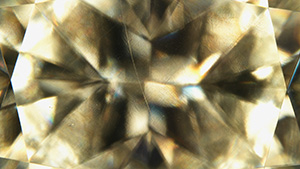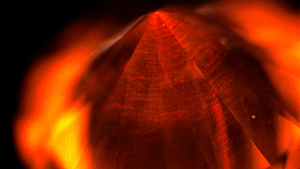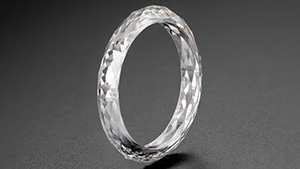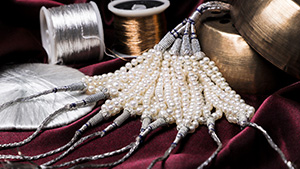

Mei Yan Lai and Matthew Hardman, November 3, 2023
Trigons and tetragons observed in a chameleon diamond indicate both octahedral and cubic growth.
Read More
Sally Eaton-Magaña, Evelina Goldort, and Dani Binyamin, November 3, 2023
A rare observation of spatially distinct red and greenish blue phosphorescence in a natural diamond.
Read More
Taryn Linzmeyer and Barbara Whalen, November 3, 2023
A natural type IIa diamond displays a unique fluorescence pattern when exposed to deep-UV light.
Read More
Elina Myagkaya, November 3, 2023
The first report of an etch channel–like structure in a CVD laboratory-grown diamond submitted to GIA.
Read More
Sally Eaton-Magaña, November 3, 2023
A CVD-grown diamond submitted to GIA requires very careful examination to determine its origin.
Read More
Paul Johnson, Stephanie Persaud, and Madelyn Dragone, November 3, 2023
The quality and size of this 4.04 ct CVD-grown diamond ring demonstrate the advancing technology in laboratory-grown diamonds.
Read More
Pfokreni Nipuni, Abeer Al-Alawi, and Roxane Bhot Jain, November 3, 2023
GIA’s Mumbai laboratory reports on the examination of an 80-year-old collection of pearls from the Arabian (Persian) Gulf.
Read More
Prasad Mane, Nishka Vaz, and Abeer Al-Alawi, November 3, 2023
A white button-shaped nacreous pearl displays rare flame-like structure.
Read More
Lubna Sahani, Abeer Al-Alawi, and Roxane Bhot Jain, November 3, 2023
Two Indian-style pearl nose rings are examined in the Mumbai laboratory.
Read More
Michaela Damba, November 3, 2023
Fingerprints resulting from a flux-assisted heating process give a purple-red ruby a unique appearance.
Read Morepast gems & gemology issues







